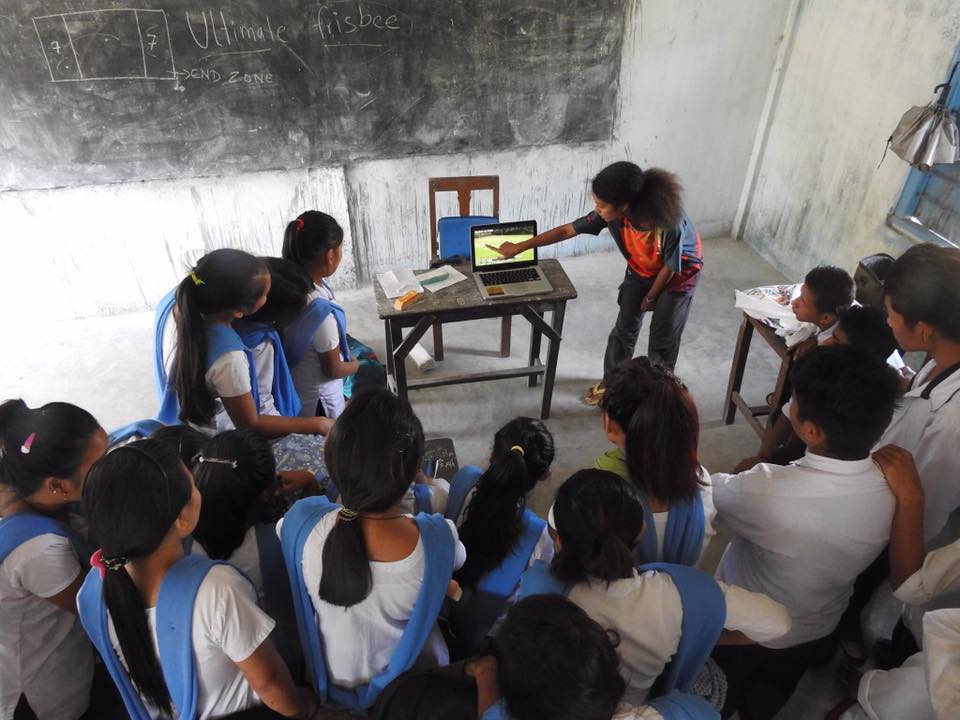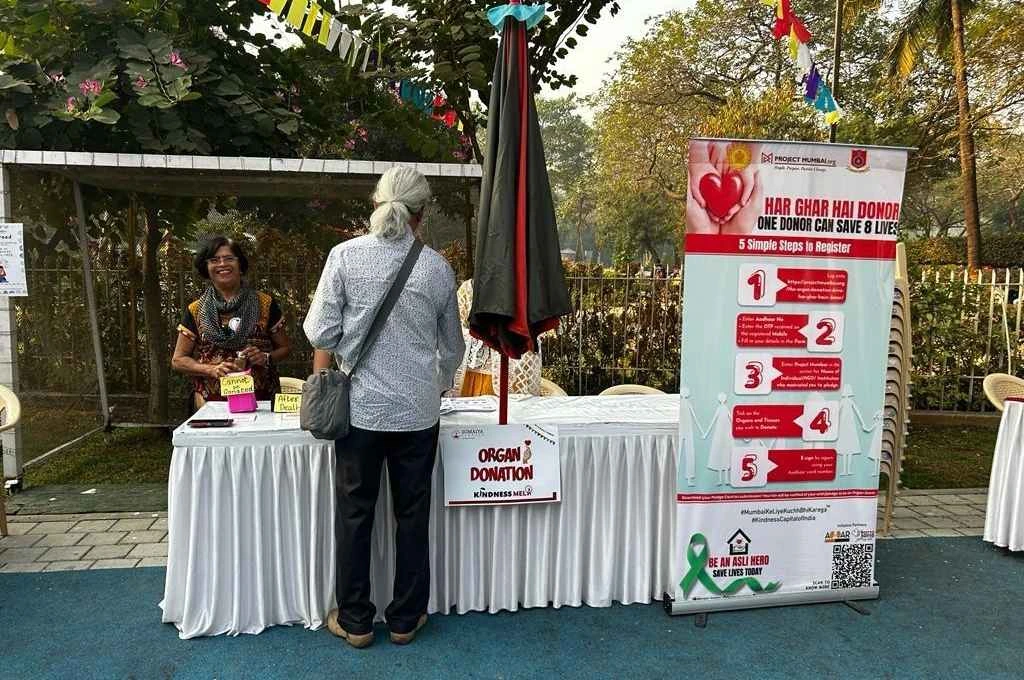As far as leadership at nonprofits goes, 7X7 seems to be the magic formula. A typical nonprofit has a founder with seven people reporting to her, each of whom then has seven people reporting to them. It is therefore usually a 50-person organisation with an INR 1.5-2 crore budget managing around six to seven projects.
While the seven people do some level of strategic thinking, the remaining 42 people are essentially field staff. Which means there is no one to think of product design, donor development or ecosystem building.
At a 50-person team, the founder can solve for most of the problems.
This INR 2-crore-50-person point is where most nonprofits get stuck. Both from a money as well as a people point of view. When the organisation is at 50 people, the founder’s intelligence can keep everything going, because she knows all the 49 people in her team, interacts extensively with the community, has a relationship with every donor and has the charisma to convince different stakeholders. Between these factors, the founder can solve for most of the problems that surface at an organisation level.
The problem starts with growth
The problem starts when the nonprofit wants to expand to the next level. I call it the 7x7x7 level because it is not just about adding projects and a corresponding number of people: it is about adding a whole new layer to manage this new set of people.
For simplicity let’s call these different levels ‘bands’:
- Band 1 comprises the field staff–people working directly with the communities.
- Band 2 comprises the project managers–managing the field staff and the projects.
- Band 3 is the new group added to manage growth. These are the people who think strategy, develop products, build people and manage new partnerships/business development.
At Kaivalya Education Foundation, we made the transition to a 7x7x7 organisation over a period of four years, as we grew to eight Band 3, 50 Band 2, and 200 Band 1 staff. This has been a painful transition but holds dear lessons for us and the sector.
The skills for this leadership level are not easily available to ‘buy’
Unlike the corporate sector, which has a fully developed ecosystem of managers and leaders, Band 3 doesn’t exist in the social sector. There are a few highly skilled people at some of the larger nonprofits, but even these are usually high-level project managers rather than people who can drive organisational growth.
A nonprofit’s ability to scale and remain sustainable depends largely on the quantity and quality of Band 3 people. And since this band is not readily available in the market, there is no choice but to build it.

Founders must identify talent and provide them active coaching. (Photo courtesy – Charlotte Anderson)
To build leadership internally, create ecosystems to support individual growth
Define expectations
The first step to building leadership to scale is to define the job at that level. The roles and responsibilities for the other levels are clear: managing projects and working with communities at the levels below and functional leadership at the level above. What, however, is the role of this Band 3 cohort? They have neither the depth of domain knowledge that their juniors have nor the breadth of experience that their leaders do. What then, is their role?
Evolved industries like manufacturing have defined and refined these expectations over decades. As large nonprofits emerge in India, we are still evolving on this front.
My experience is that the key role of people in leadership roles is to develop products, build people and manage key stakeholders. Not having articulated this, I struggled to communicate my unrealistic and unclear expectations with my senior team. I wish I had been able to clarify them much earlier than I finally did.
Identify the team members who have the potential to succeed
Today, there is a simplistic solution to solving the problem of leadership scarcity: ‘Send them to a five-day workshop on management skills.’ While this is useful, in my experience it is not sufficient.
Having defined the role of Band 3 leaders, the next step is to identify the most talented Band 2 personnel—typically only 40 percent will have the potential for the next level.
This will require the founder to know each one in this Band 2 inside out: their strengths, where they need support, their family situations, whether they can afford such a salary over the longer term, and so on. A deep personal insight into each potential candidate is the key to success.
Provide ‘active coaching’
It is important to give very specific input on what is preventing the individual’s development. It is not enough to give feedback saying, ‘Become more strategic in your thinking.’ One must explain what strategic thinking means in the specific work context, projects, etc.
The challenge is that the skills required to manage empathy-related work are harder to teach and learn. In organisations that involve brain work (research, consulting, etc.), academia and even the corporate sector, traditional hierarchy works with the supervisor at each level adding value through more strategic and analytical thinking, and improving the ‘product’.
However, it’s different in the social sector. How does one keep a colleague motivated when they are working in a remote district, with no colleagues to interact with and no people to learn from? What skills does one need to function effectively as their manager?
Motivation, then, is very much about helping team members find meaning in their role, joy and pride in their work and opportunities for continuous learning. And these are the skills that need to be taught.
Assign live projects to help them acquire new capabilities
We call the process of providing opportunities ‘staging’. Potential Band 3 people are put into projects that test their ability to do that kind of work. While they do not lead the project, they are expected to contribute in a significant manner–for instance, thinking of new curriculum. The potentials get to watch and learn from the person leading it. Since these are usually cross-functional teams, they are required to interact with people with completely different skillsets and approaches. This is different from their experience thus far, where they were only interacting with field staff and communities.
We use this method to see how well they get things done, add value in increasingly complex groups, and manage change between project and government teams.
Manage performance to build skills consciously
For us, performance management is as much an opportunity to drive individual growth as it is about meeting the organisation’s goals. We action this through careful goal-setting at the beginning of the year and periodic, rigorous discussions and realignment between the individual and her manager on progress and way ahead.
The goals for each individual get customised to balance the strengths that they bring and their learning areas in developing products, building people and managing key stakeholders. The goals agreed are then discussed and realigned at regular intervals throughout the year in performance conversations and reviews.
These performance discussions use data to help individuals and managers objectively identify their strengths and development areas. These insights, in turn, result in active coaching and strategic live projects designed to complement the individual’s learning goals and strength areas.
This combination of coaching, live projects and performance management creates a comprehensive ecosystem that is invested in helping the individual succeed.

Photo courtesy: Veera Sethuraman
The responsibility of developing this leadership talent lies with the founder
I spend 50 percent of my time focusing on people development. Of the 50 percent, half the time is on 1-on-1 performance management and mentoring conversations with the 12 people who report directly to me. Another 25 percent is with the 17 people who report to them and the last 25 percent is focused on setting up HR processes. I have learnt that, as founder, my key role is to put the right people in place; the money will follow. There is a lot of money in the sector today. What funders want to see is an organisation with skilled and capable people to run operations at scale.
This does not come easily to a founder
First change how you think
At some point, I had to shift my thinking. I had to tell myself, “I enjoyed working with 100 headmasters and convincing them to change, but my new group now is the managers and leaders in my organisation–Band 2 and 3″. I now get my energy from them (just as I earlier got it from the headmasters) and I know that the impact will be significantly greater.
It’s not easy, though. To get to that space, I had to first stop focusing on the headmasters and the programme to free up space for thinking about this. It requires a great deal of cognitive behaviour change.
Get help
Most founders won’t know how to go about doing this. I still don’t know entirely. We therefore have a professional organisational development person who helps us with this. One also needs to set up a structure where everyone in the organisation can learn how to do this.
Institutionalise the thinking
It’s not enough for the founder to think and act like this. It must percolate down to the leadership team and then the team below. How else will the middle levels develop their people-skills and move up?
From taking up 10 percent of a manager’s time at the beginning, people development must slowly move to 20 percent, then 30 percent and finally 50 percent. Once it hits 20 percent, though, the manager will not know how to take it to the next level. That’s why it is important to have a performance management system that defines roles and capabilities that need to be developed.
Start early
One of my big mistakes is that I started investing in internal leadership too late. I did not know how to do it and I enjoyed working on the programme far more. So, I kept using the excuse of programme expansion to not build the capabilities of the team.
This is the challenge most founders and leaders face. We don’t know how to do this; we don’t have backgrounds and expertise in leadership and people development, and there is almost no knowledge or expertise in the sector that one can call upon to learn it. [quote]There is no knowledge or expertise in the sector that one can call upon to learn talent development.[/quote]As leaders who set up organisations for the sake of the programme, learning and refining on that front comes easily to us. Organisation and leadership development on the other hand, is usually unknown territory and requires us to work harder on things we don’t particularly like in the first place. It’s not a place of passion for most of us.
We expect people who join us to be as driven and crazy as us founders. But that’s not always the case. And it’s an unreasonable expectation.
As we scale further–we are on the path to create the 7x7x7x7 stage, a 2,000-person organisation–we are trying to figure out what skills are required three levels away from the community. And three years from now, we will know if it was a grand success or a monumental failure and what we learnt from this journey.



